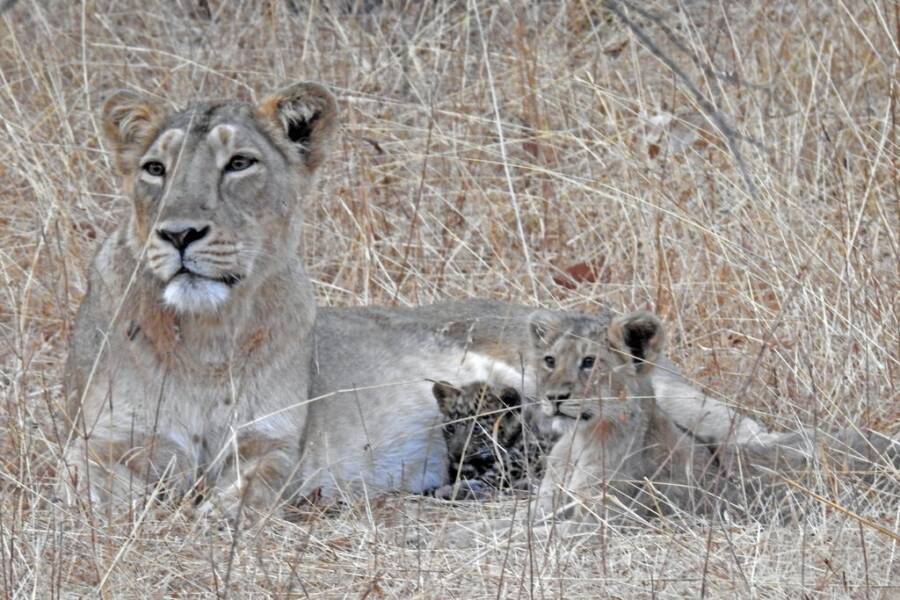A Mother Lion Raised A Baby Leopard In An Interspecies Adoption That Shocked Biologists

Dheeraj Mittal
A mother lion stunned biologists when she adopted an orphaned baby leopard.
The heartwarming story of an inter-species adoption between an adult female lion and an orphaned baby leopard was another one of the great science articles that came out this year.
Biologists were stunned when they witnessed a a lioness adopt a baby leopard at India’s Gir National Park. The unexpected inter-species adoption lasted for a month and a half.
The baby leopard nursed and played with the female’s two lion cubs, who physically dwarfed the tiny leopard. But the mixed clan seemed to get along well. The cubs seemed to accept their adoptive sibling into the fold, running around and wrestling each other without issue.
“It looked like two big cubs and one tiny runt of the litter,” said animal behaviorist Stotra Chakrabarti who has been studying the lions at the park for the last seven years. Chakrabarti said he had never witnessed anything like it.
Although inter-species adoption is uncommon, there have been some reported instances of such adoptions taking place in the wild. The case of the lioness and the orphaned leopard was unique because she already had cubs of her own and the adoption had lasted for as long as it did.
The inter-species adoption between the mother lion and baby leopard may have been supported by the fact that the two big cat species are not much different in their early development stages. It could be why the leopard cub was easily accepted into the small clan.
But as the cubs grew older, their physical differences would have become more prominent and likely changed the dynamic of the mixed group.
Furthermore, the lioness and her two biological cubs were separated from the rest of the pride, which is typical when a female gives birth. This made it easier for the leopard cub to be accepted by the mother lion and her two lion cubs.
Sadly, the mixed family’s time came to an end after the baby leopard died of a congenital femoral hernia.
“It would have been fantastic to see, when the leopard cub grew up, how things would be,” Chakrabarti said. “But it didn’t happen.” The astonishing paper was published in the ecology journal Ecosphere in February 2020.





